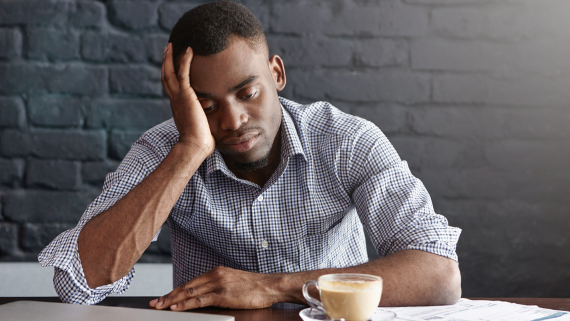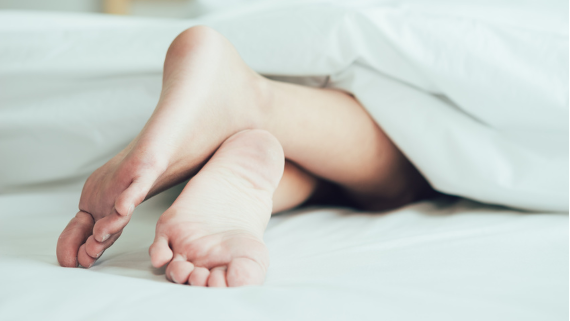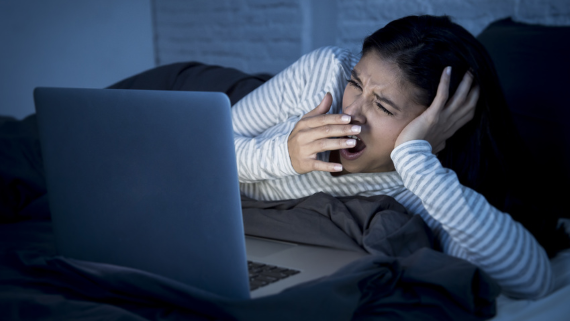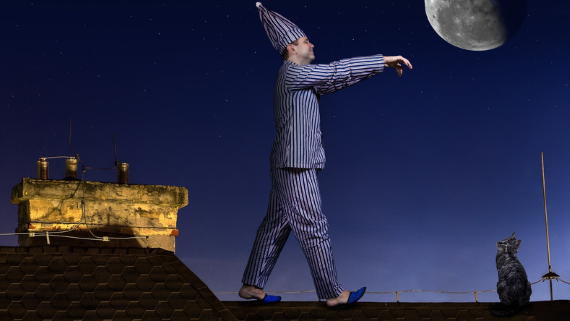Sleep Disorders
It is estimated that some 40 million Americans suffer from chronic, long-term sleep disorders. Another 20 to 30 million Americans suffer from some kind of sleep disorder on an irregular basis. The annual costs in productivity, health care, and safety have been estimated in the billions of dollars. Here are some of the more common types of sleep disorders:
Obstructive Sleep Apnea

Sleep apnea is a disorder that commonly affects more than 12 million people in the United States. OSA occurs in approximately 2 percent of women and 4 percent of men over the age of 35. People with sleep apnea literally stop breathing repeatedly during their sleep, often for a minute or longer and as many as hundreds of times during a single night. Sleep apnea can be caused by either complete obstruction of the airway (obstructive apnea) or partial obstruction of the airway (obstructive hypopnea). Both can contribute to several other health problems like, high blood pressure, stroke, cardiovascular disease, diabetes, or general fatigue and daytime sleepiness causing daytime dysfunction.
Narcolepsy

Narcolepsy affects less than 1%, (approximately 125,000 people) in the United States. Narcolepsy is a chronic sleep disorder with no known cause. The main characteristic of narcolepsy is excessive and overwhelming daytime sleepiness, even after adequate nighttime sleep. A person with narcolepsy is likely to become drowsy or to fall asleep, often at inappropriate times and places. Daytime sleep attacks may occur with or without warning and may be irresistible. These attacks can occur repeatedly in a single day. Drowsiness may persist for prolonged periods of time. In addition, nighttime sleep may be fragmented with frequent awakenings. Other symptoms typically associated with narcolepsy include: cataplexy (short-lived intermittent muscle weakness), hypnologic hallucinations (hallucinations while falling asleep or waking), and sleep paralysis (paralysis while falling asleep or waking). Narcolepsy usually begins in the teens or early twenties (10 to 20 years old), but this varies; both young children and the elderly experience sleep attacks as well. There is an equal incidence among both women and men.
Restless Legs Syndrome

Restless Legs Syndrome (RLS) is a neurological disorder which affects five to 15 percent of the population at some time in their life These patients experience irrepressible sensations in the legs or arms while sitting or lying still. Common complaints to describe RLS may include creepy, crawly, pulling, tingling, itching, or gnawing sensations in the limbs. Often the person with RLS has difficulty being specific about these sensations. They are sometimes described as painful. These uncomfortable feelings usually begin in the evening and upon arrival to bed, unless severe, RLS is absent during the morning and early afternoon. The sensations usually disappear or diminish when the limb is moved. RLS is more commonly seen in the elderly, and it may be more prevalent in women, although it can occur at any age and in any sex. Approximately 80 percent of people with RLS also suffer from Periodic Limb Movement Disorder (PLMD).
Periodic Limb Movement Disorder (PLMD)

Periodic Limb Movement Disorder (PLMD) is a condition in which a person's legs or arms twitch or move involuntarily and periodically during sleep. The limb movements typically occur 20 to 30 seconds apart, 5 or more times an hour, on and off throughout the night. The rhythmic episodes usually involve a partial flexing of the big toe, ankle, knee, and occasionally, the hips. The affected individual is usually unaware of the repetitive motion or the accompanying brief awakenings that disrupt sleep. Thus, people who have PLMD usually complain of difficulty in falling asleep, staying asleep, or staying awake during the day. Bed partners often report being kicked or being awakened by the movements. PLMD becomes more common as people age - around 34 of people over the age of 60 have PLMD. It occurs in men and women equally and is not very common in people under the age of 30. Many people with PLMD also have Restless Legs Syndrome.
Insomnia
This disorder is a perception or complaint of inadequate or poor-quality sleep because of one or more of the following:
- Difficulty falling asleep
- Waking up frequently during the night with difficulty returning to sleep
- Waking up too early in the morning
- Unrefreshed sleep
Individuals vary normally in their need for, and their satisfaction with, sleep. Insomnia may cause problems during the day, such as tiredness, a lack of energy, difficulty concentrating, and irritability. There are many causes of insomnia but generally occur in people who are temporarily experiencing one or more of the following:
- Stress
- Environmental noise
- Extreme temperatures
- Change in the surrounding environment
- Sleep/wake schedule problems such as those due to jet lag
- Medication side effects
Chronic insomnia may be due to behavioral factors, including the misuse of caffeine, alcohol, or other substances; disrupted sleep/wake cycles as may occur with shift work or other nighttime activity schedules; and chronic stress.
Parasomnias
Parasomnia is a broad term used to describe various uncommon disruptive sleep-related disorders. They are intense, infrequent physical acts that occur during sleep. Some common parasomnias include sleepwalking, sleep talking, sleep terrors, nightmares, and teeth grinding. Although these disorders are indeed bizarre, effective treatments are available. Diagnosis is made on the basis of findings from the clinical interview and polysomnography. Treatment is successful in the majority of cases.

